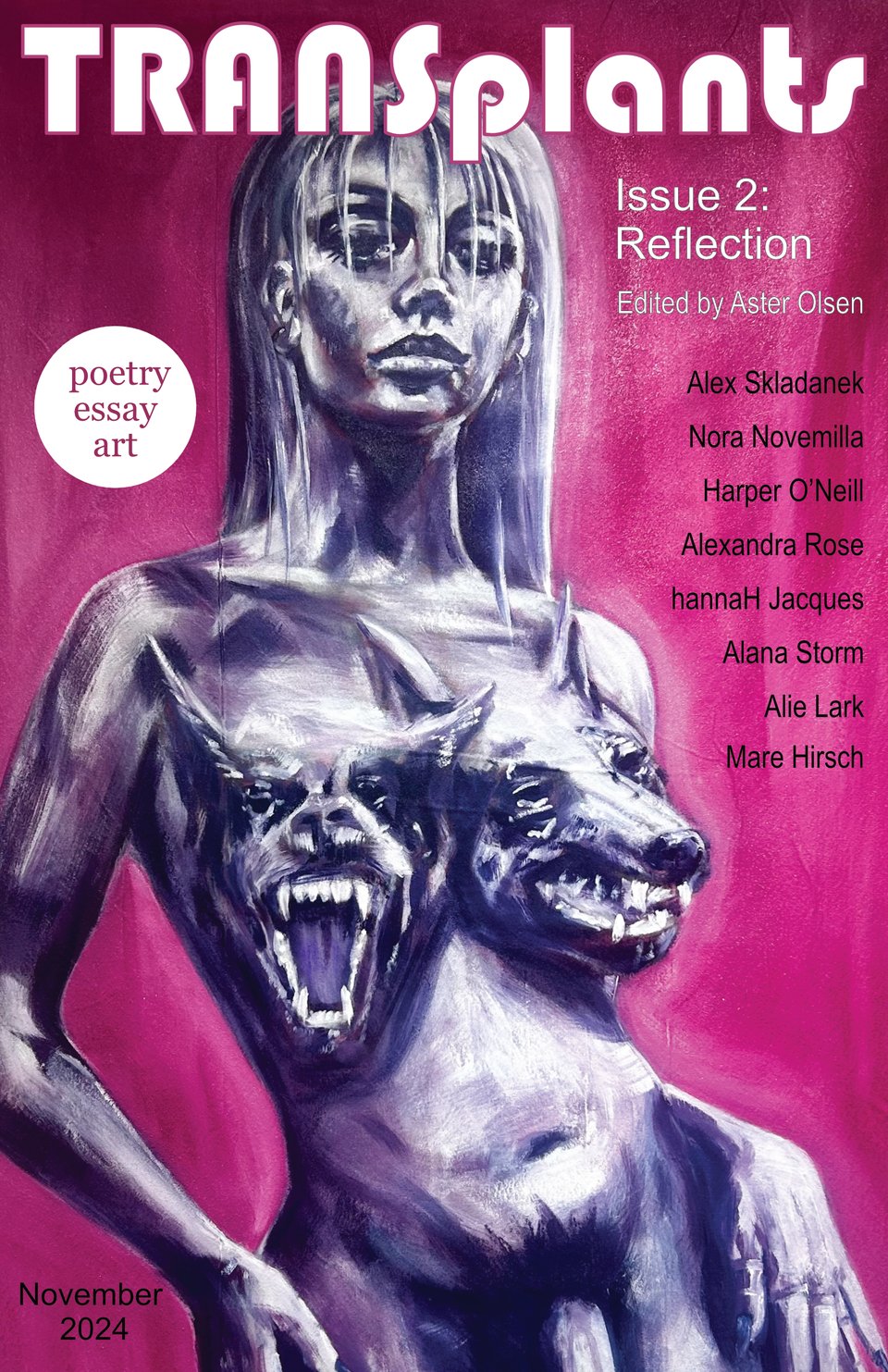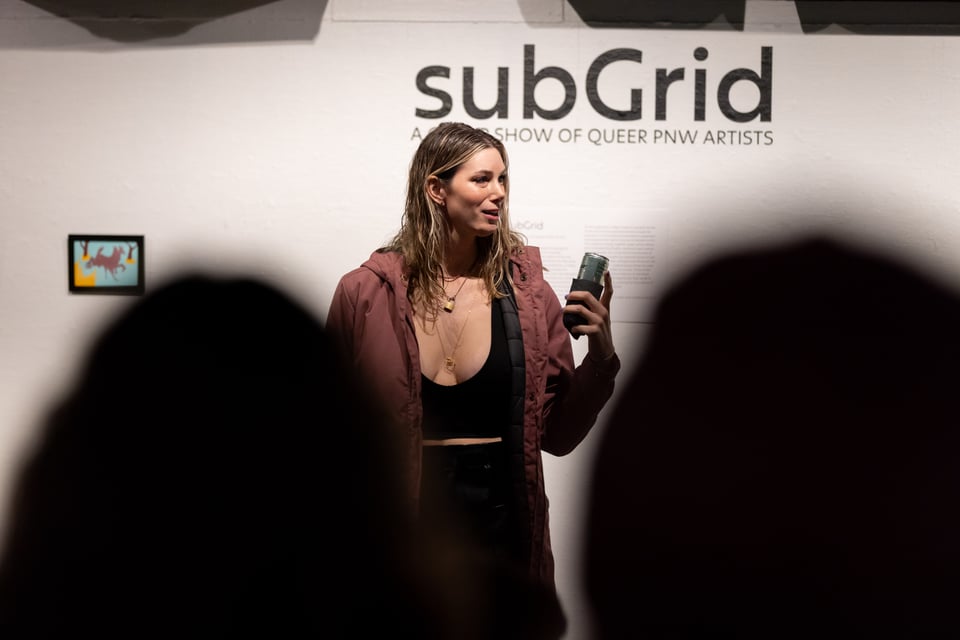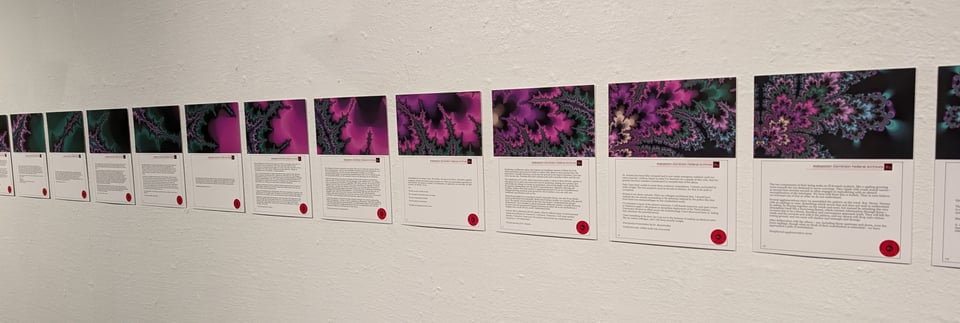TRANSplants Issue 2 and subGrid
Reminder to myself: I have a newsletter.
TRANSplants Zine

TRANSplants Issue 2 is now available for order!
Like Issue 1, this is a full color zine filled with original poetry, art, and essay focused on transness and place.
These are the artists and writers:
- Dog Tits, by hannaH Jacques
- Title TK, by Alie Lark
- The Fireworks Over Dune Grass in Wildwood, NJ, by Harper - O’Neill
- Georgia Clay, by Alexandra Rose
- Particles, by Mare Hirsch
- How To See True, by Alana Storm
- Muscle, by Nora Novemilla
- An Answer in Red, by Alex Skladanek
The zine is 58 pages, 5.5" x 8.5".
subGrid
Records from the Alabastion Dominion Federal Archives

Last week was the opening of subGrid, an art show featuring several queer pacific northwest artists and also somehow me. My exhibit is found archival documents paired with fractal art.
I wanted to explore the way a society’s assumptions influence its ability to understand violations of an assumed “normality”. This is obviously relevant to a resurgent fascist movement here and abroad and the way in which violations of “proper gender norms” are despised, but it is also about our own queer or accepting liberal/leftist communities. I suspect I'm not alone in having had an awkward exchange with a well meaning ally that just didn’t really “get it”. Or maybe you’ve been part of intra-community strife from assumptions about how queerness “should” function, what should be included, what shouldn’t (free tip: move out of the queer only group house).
With that general idea in mind, I fleshed out the idea for a culture based deeply in the binary, much more so than ours. Their home planet orbits a binary star system, and the belief in the rightness of the binary is deeply baked into the way they understand the world and organize their culture. This means they are advanced in some ways, such as with computers and technology, but limited and behind ours in others, like with biology. This even extends to the way their expeditions are organized: two opposite but complementary planetary surveyors.
What is alien to that system? Well, something that isn’t binary I suppose, right? But the irony here is that this assumption is itself a sort of binary, no? I decided on three characters. Two "opposites" from the binary culture, and one conglomerative from the alien. The alien in this case is an organism which organizes itself over a theoretically infinite number of repeated patterns inspired by fractals. It is both individual and communal, constantly in flux, never settled, with a deep belief in consensus. The three characters' interactions play out in a way in which ultimately none of them understand the other. In the end, the two explorers are assimilated by the organism, a gross violation of their individuality which is unrecognized by the alien, but is also representative of the fundamental change that is required in someone for full comprehension. Through either voluntary vulnerability or through force, one must transition to a new state to fully understand.

For the fractal art, I used a variation of the mandelbrot set in the shape of a butterfly as that is a common metaphor for transition. Throughout the story I change the framing, or point of view, of this fractal set. By definition, we cannot imagine the unimaginable. Even if we think we have a complete picture, ultimately we always lack some information. The fractal equation is known, in a mathematical sense, but that does not mean any particular representation of it is known in the personal, emotional sense.